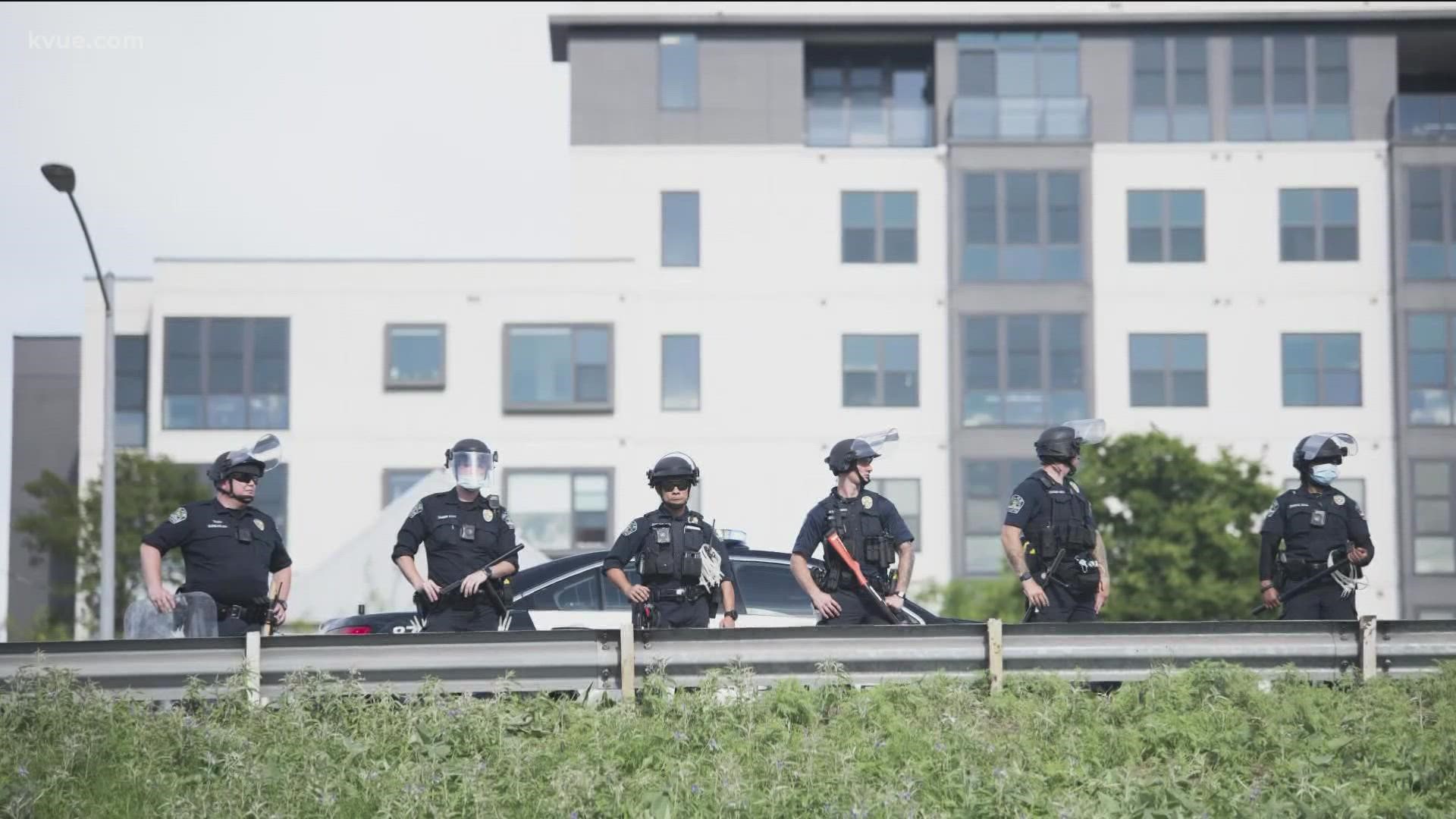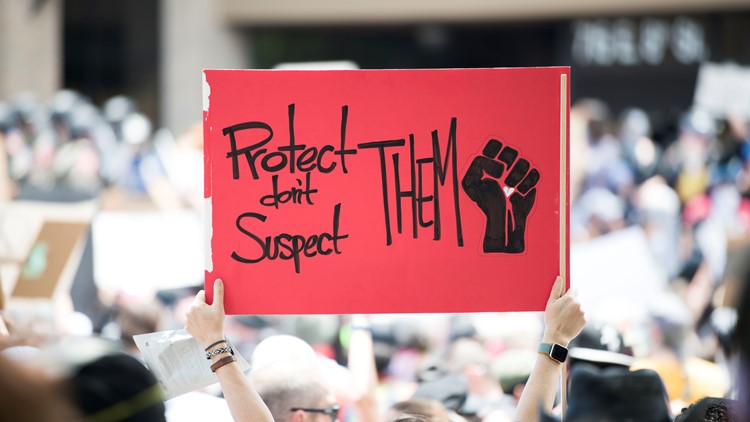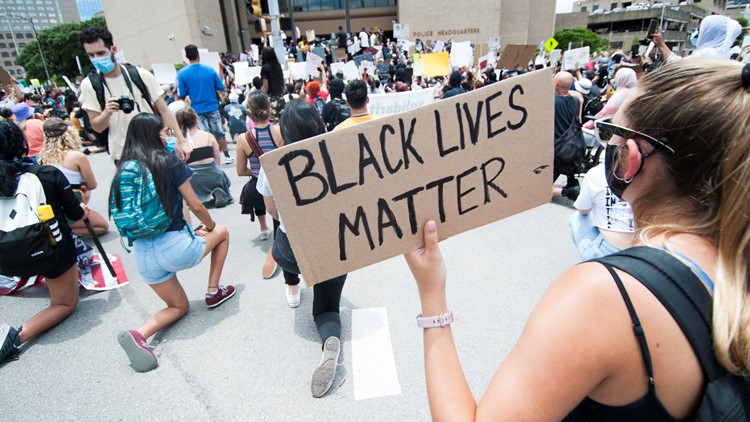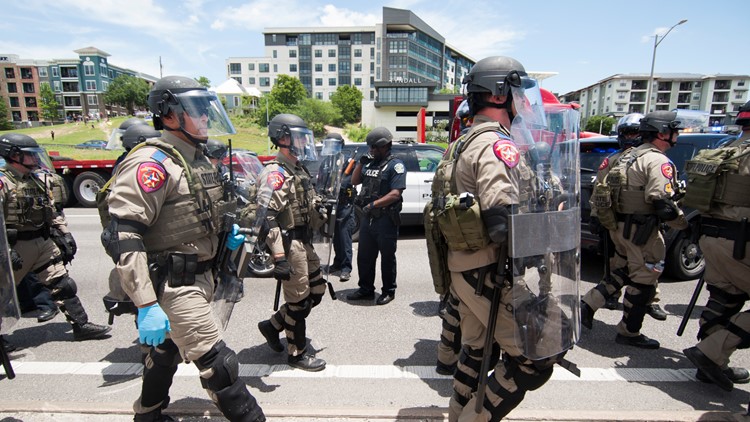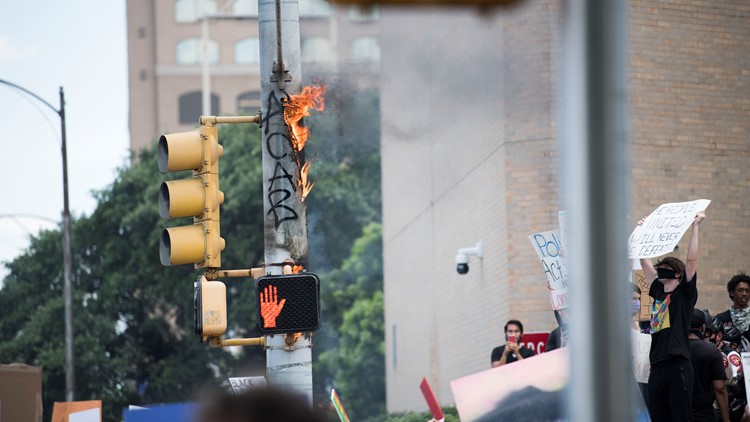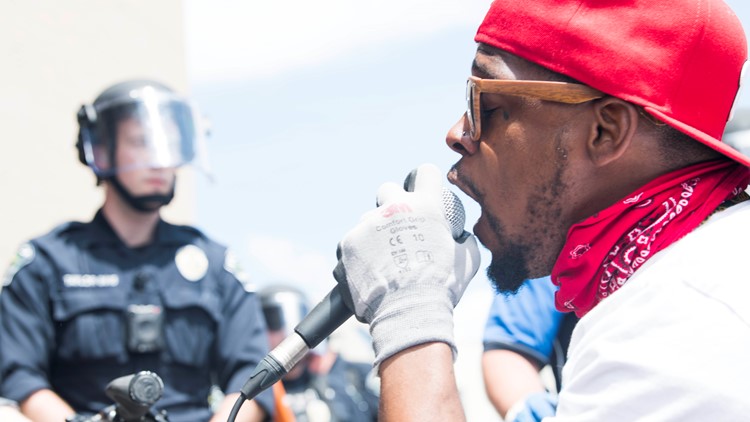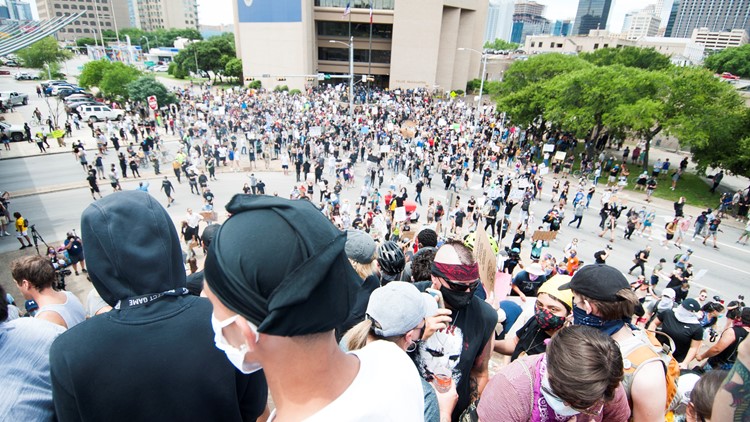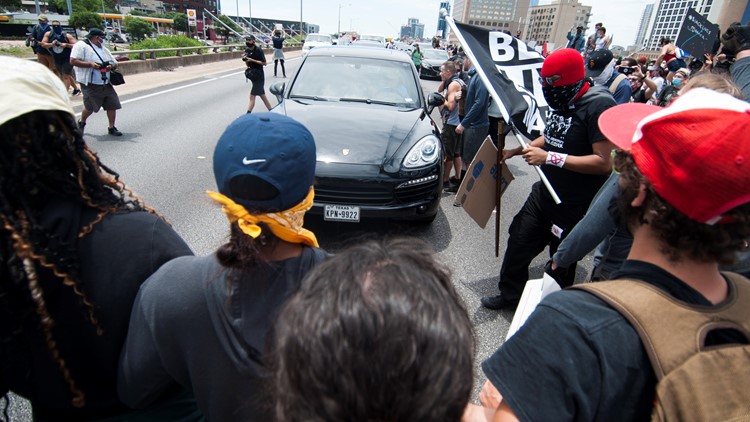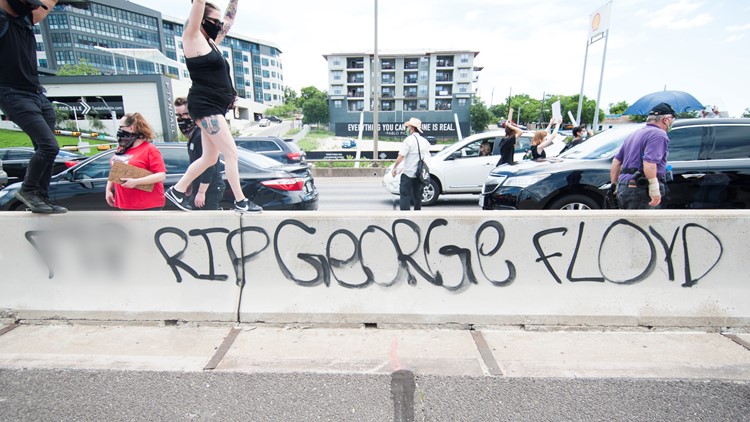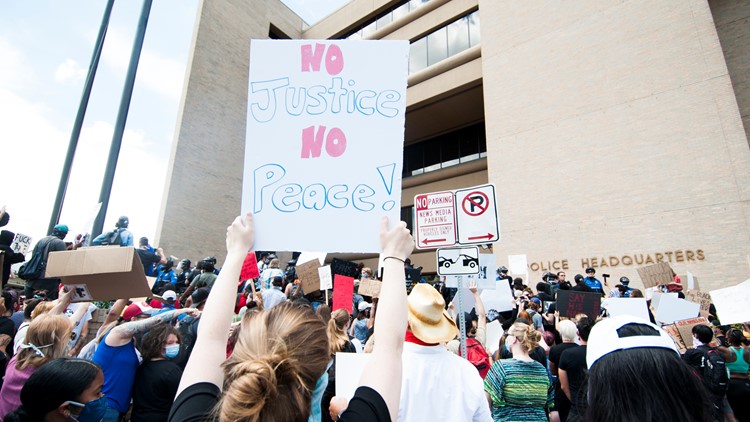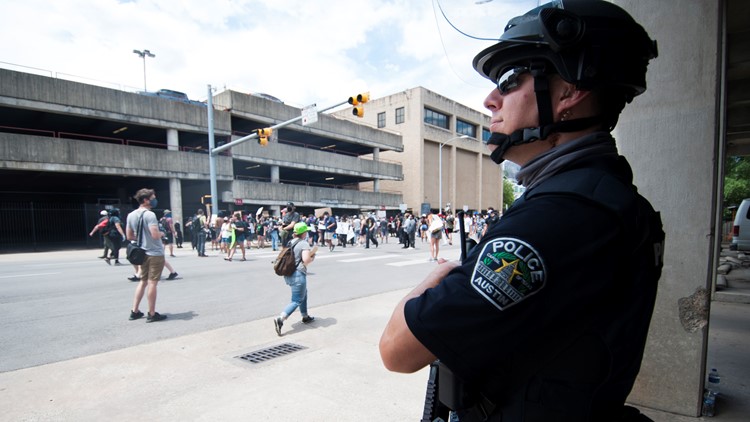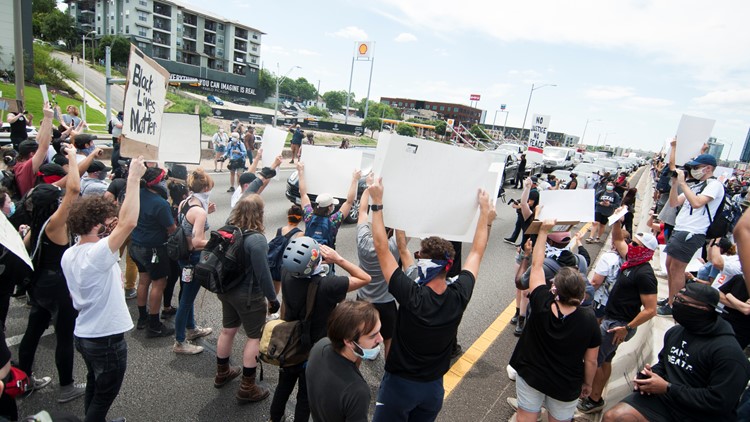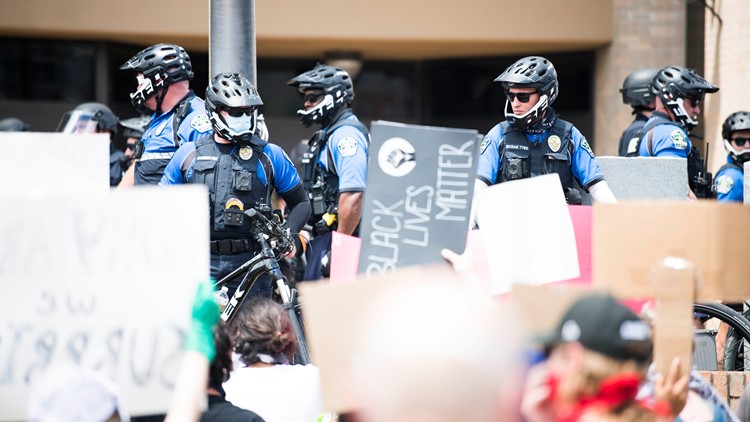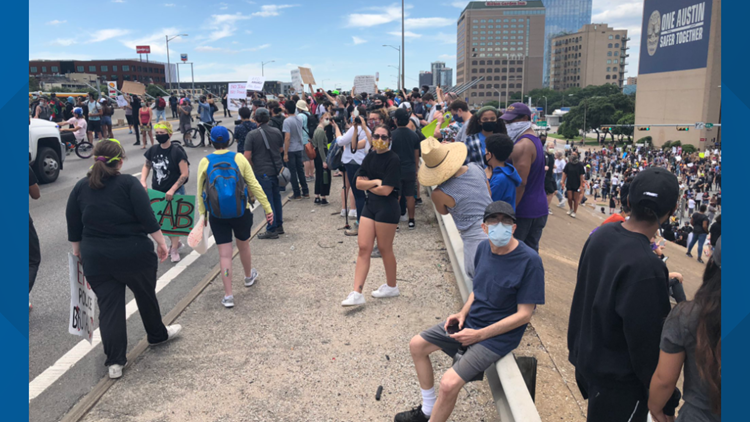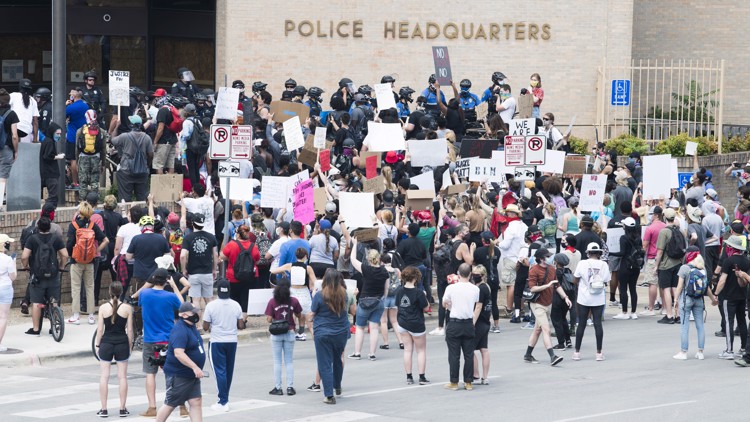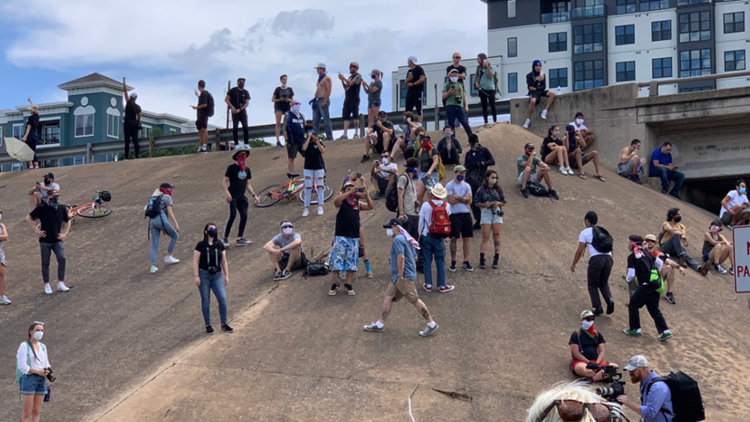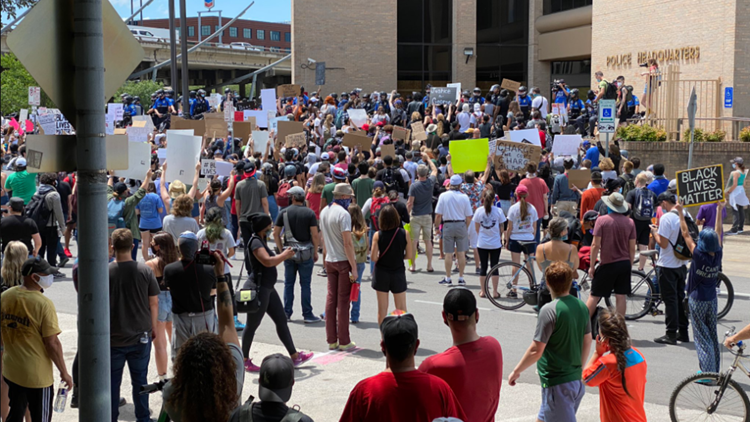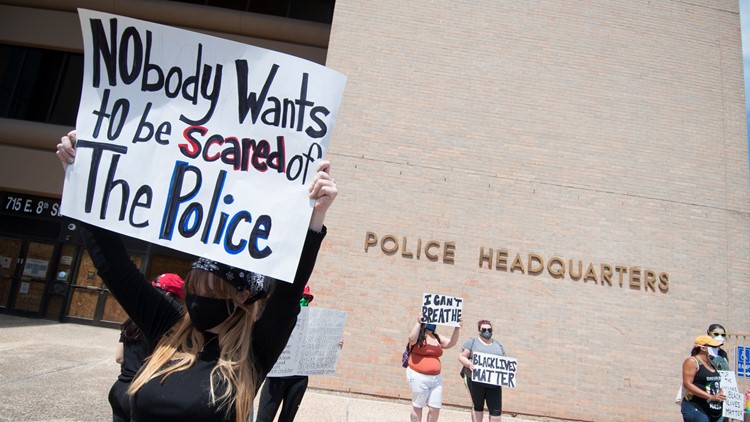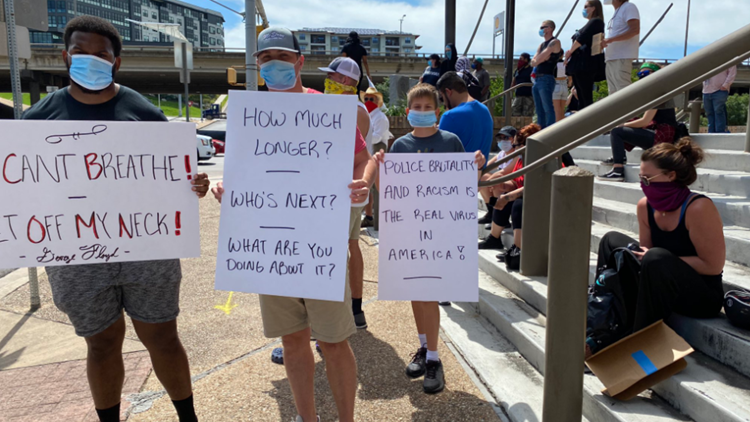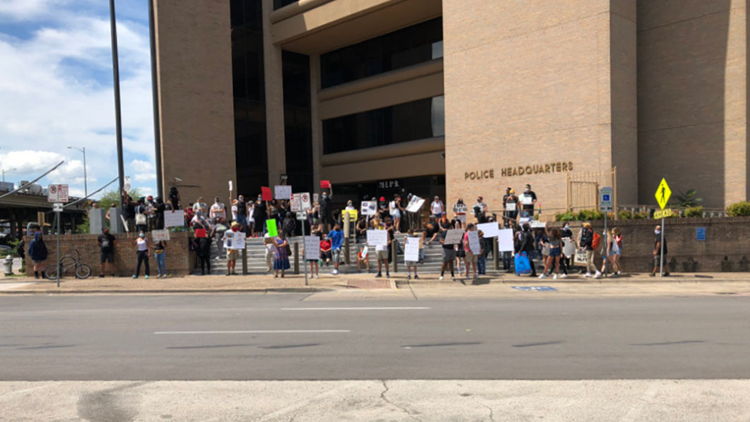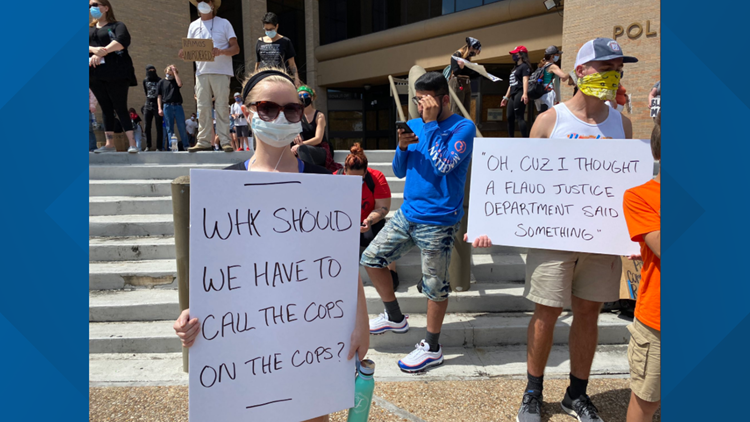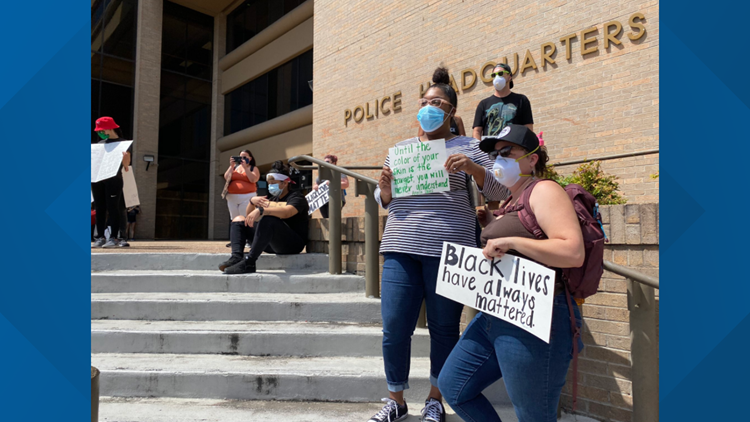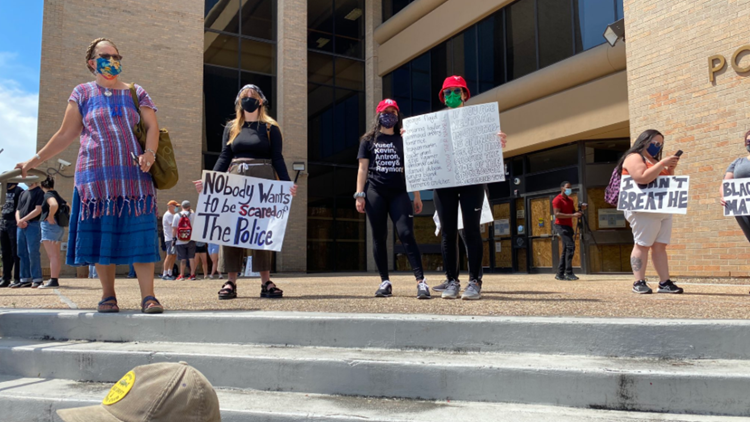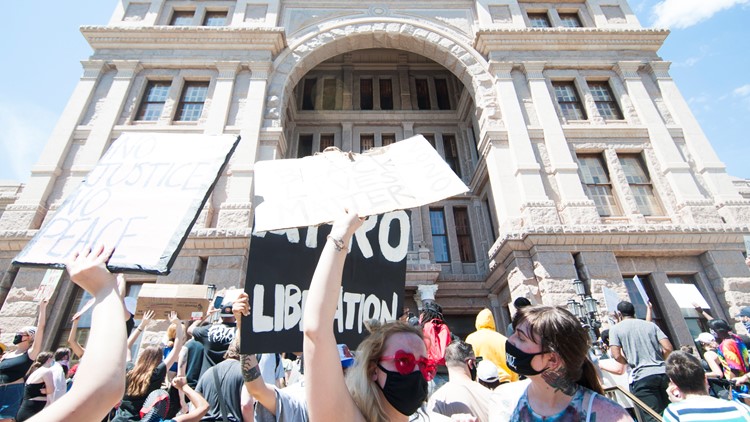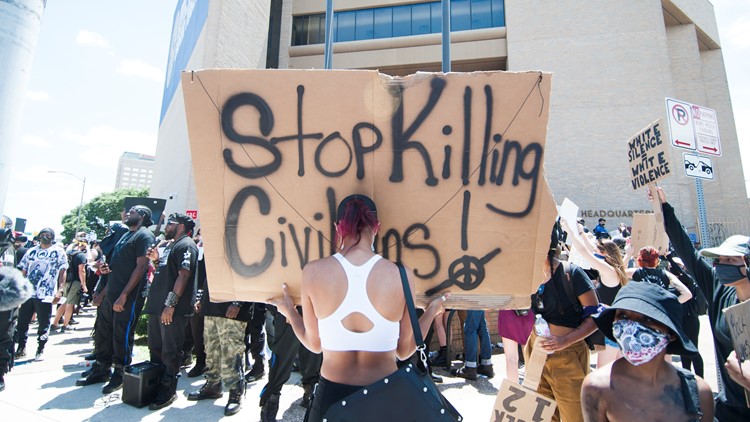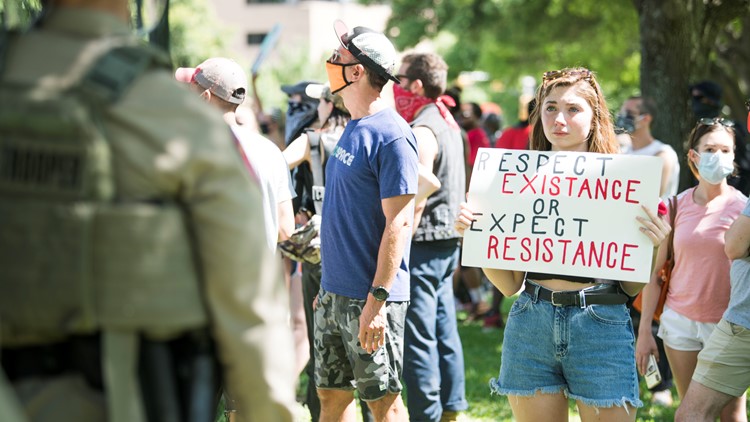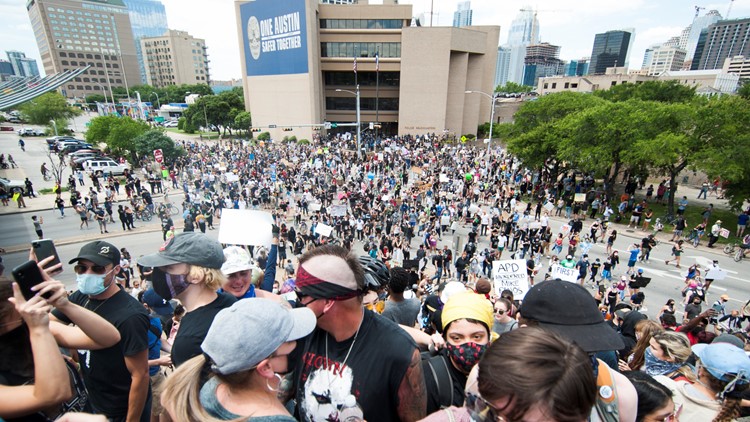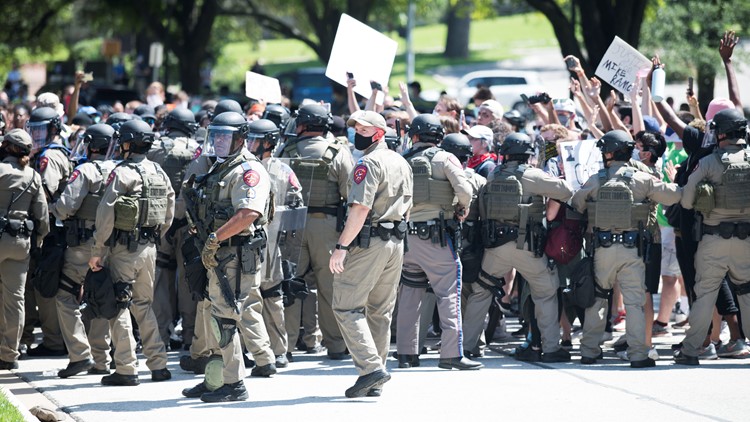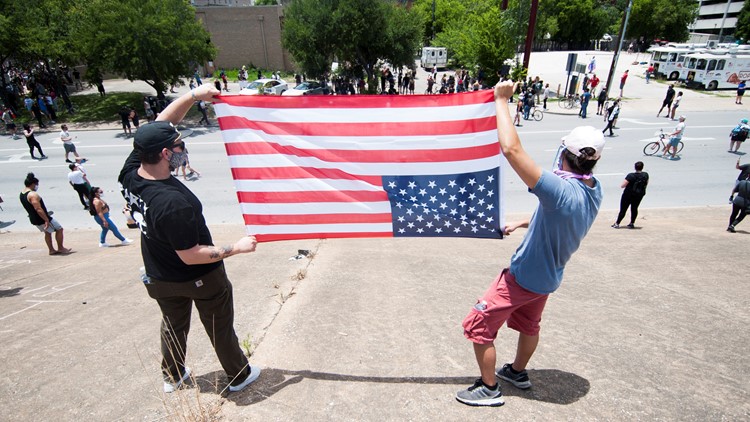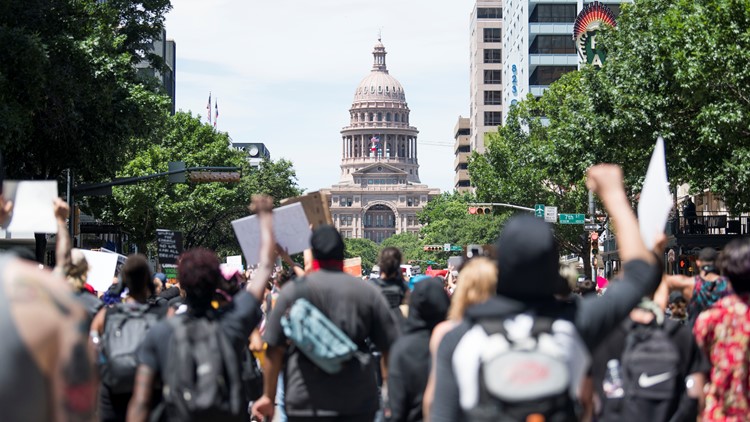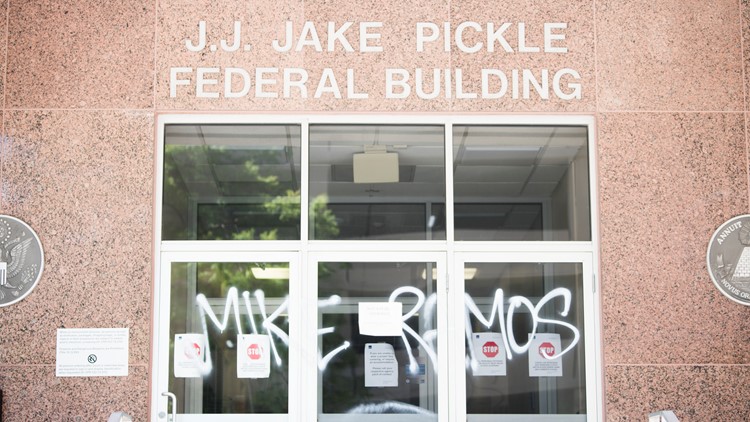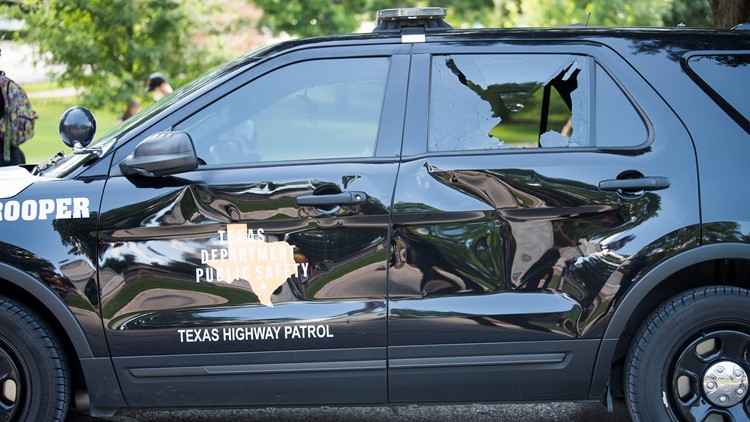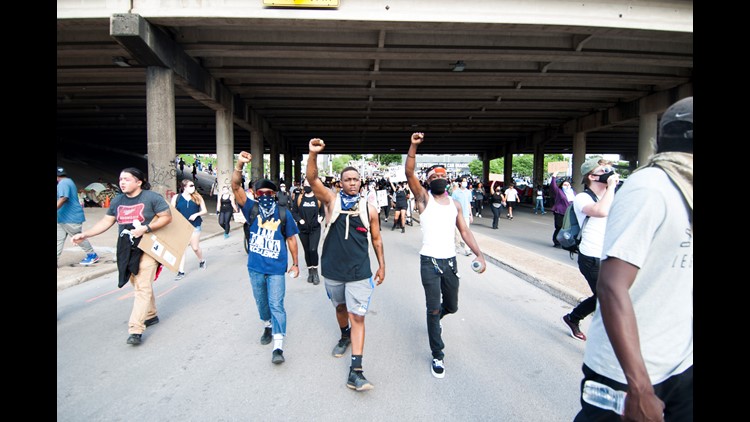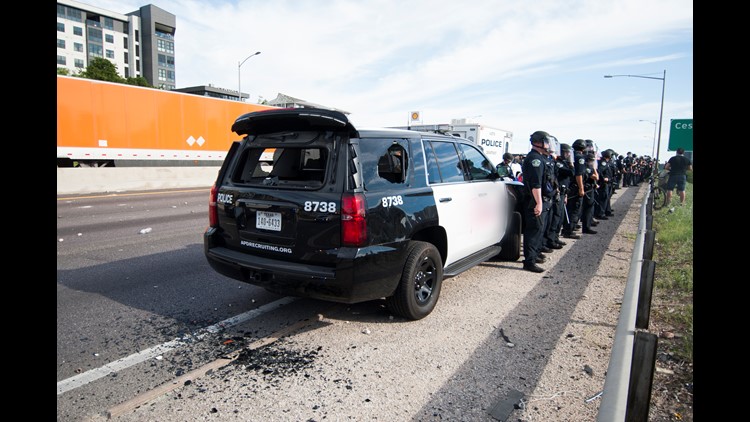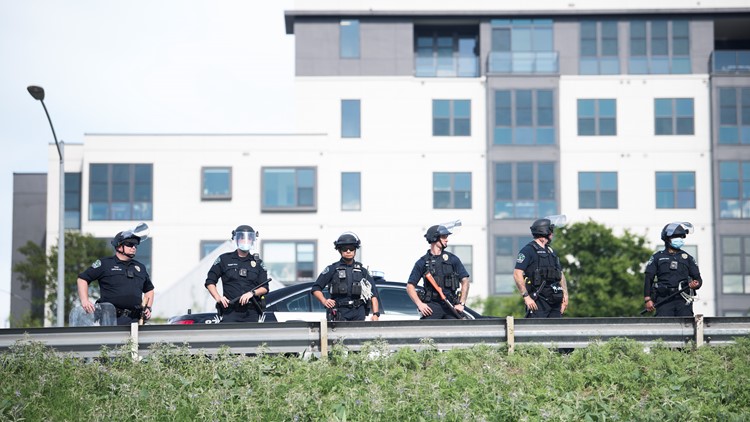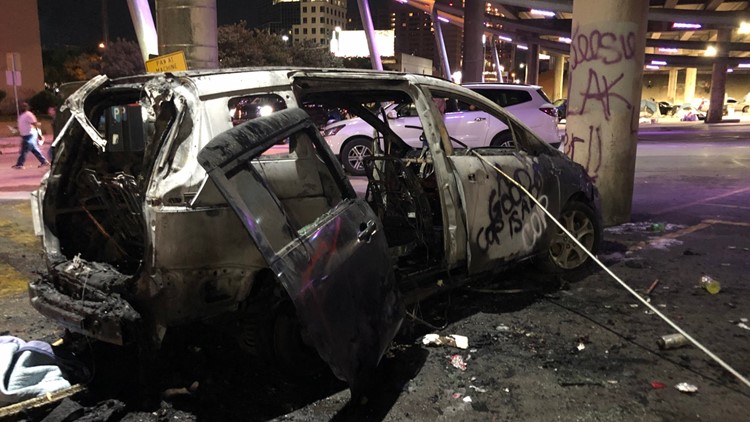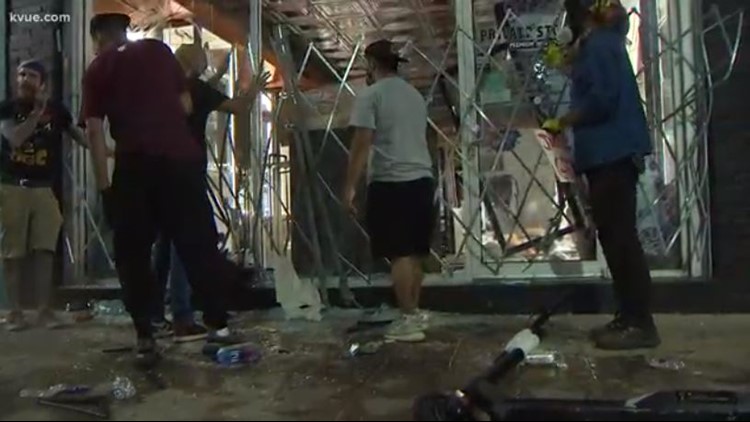AUSTIN, Texas — Twenty months after the George Floyd protests in Austin – and with 19 officers charged with assault for using force on protesters – new records reveal a chaotic police operation that officials admit could have contributed to protester injuries.
The new documents, based on depositions of Police Chief Joe Chacon in October and former Chief Brian Manley in April, provide the first deeper look at how APD responded to the unprecedented protests and chronicles what Chacon describes as mistakes from the top down.
The documents reveal a department caught off-guard by the size and intensity of the protests.
“We knew the protests were coming and we were certainly trying to plan for it. I don’t think we planned for the scope of these protests – for the sheer size of the crowd that was going to be coming out … I don’t think in the end it was adequate for the size of everything that we saw,” Chacon testified.
The KVUE Defenders obtained the transcripts in partnership with the Austin American-Statesman from the testimony of Chacon and Manley recently as part of about a dozen ongoing civil lawsuits stemming from the protests.
PHOTOS: Austin protests for George Floyd, Michael Ramos
The release of the transcripts come as Travis County prosecutors announced last week that 19 officers had been charged with aggravated assault from the use of so-called "bean-bag" rounds on protesters. District Attorney Jose Garza said most, if not all, of the protesters are innocent victims – a contention that Chacon has taken issue with in both a recent news conference and in his deposition.
It also comes as the city settled two civil lawsuits for a combined $10 million against seriously injured protesters Justin Howell and Anthony Evans. Howell received $8 million; Evans got $2 million.
The protests outside police headquarters were unlike any the city had seen. And unlike traditional protests on Austin streets over battleground issues such as abortion or voting rights, the subject of the protests – the police themselves – were there, which officials said added to an already combustible situation.
Much of the public scrutiny of the protests – and the focus of a Travis County grand jury and prosecutors – was on the use of bean-bag rounds that injured multiple protesters, including 16-year-old Brad Levi Ayala.
According to transcripts, some officers testified they were given “no rules of engagement and no tactical instructions” about the weapons, attorney Jeff Edwards told Chacon.
“Because it was, to a good extent, disorganized, that led to us not providing the clearest instructions that we could have with regard to that weapon system," Chacon testified. “I think that, you know, the fault lies at many levels, including the supervisory level, but you know, honestly, it goes – it goes up to the highest levels as well.”
Chacon acknowledged that officers were shooting rounds from elevated surfaces, including from the front of APD Headquarters – and farther than the 75 feet recommended by manufacturers – possibly accounting for the severity of some injuries.
“This isn’t a situation where officers made unilateral decisions to use one tool or another. This is what they were provided by the department and assigned," attorney Doug O'Connell, who represents eight of the indicted 19 officers, told the KVUE Defenders.
The day after Ayala’s injuries, the number of wounded increased, with injuries to Howell and Evans.
“I started running, like jogging, and then turned my face, and as I turned, I got shot in the cheek," Evans told KVUE in 2020.


Chacon also testified that the department also suspended certain reporting requirements for uses of force that might have alerted department brass sooner that people were getting hurt.
In his deposition, Manley said officials wanted to keep officers on the front line of the protests but, because of that, missed a key opportunity to realize bean-bag rounds were hurting protestors and to potentially put protocols in place for officers.
“I agree that we couldn’t have officers stepping off the line and going inside to write reports, but I do think we could have handled it better,” Manley testified.
A year and a half later, asked by an attorney representing several injured protesters whether he is ashamed of the department’s response, Chacon responded: “I would say that there is some level of shame because I represent the police department. I don’t like that this happened. I want to take steps to make sure we never have anything like this happen again.”
PEOPLE ARE ALSO READING:

